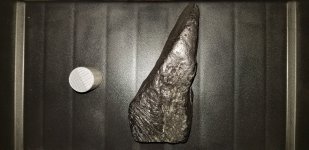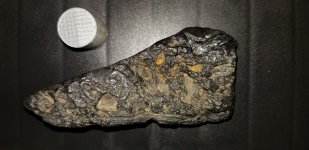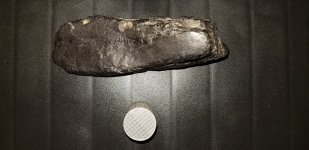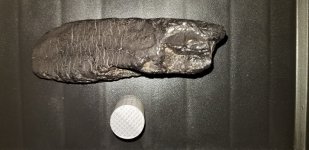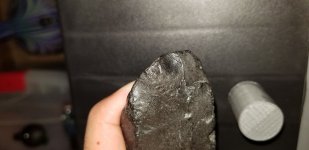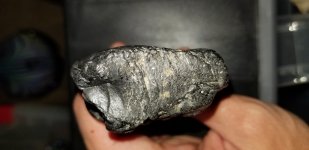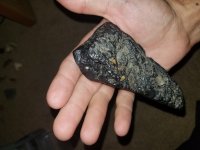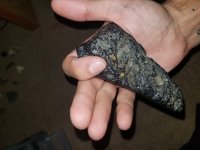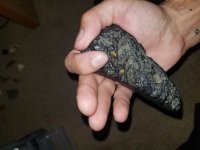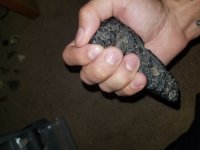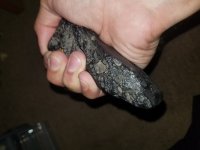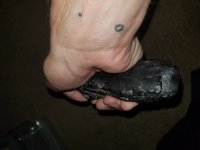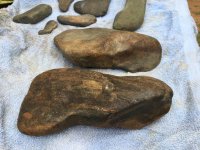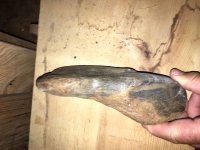CodyPratt
Jr. Member
I found this oddball sticking out like a sore thumb in this area I've been finding a bunch of points and chert tools. I didn't think much when I put it in the backpack, but once I got home I realized it's stone. It kind of looks like wood that burnt, then petrified, then was knapped in places for finger holds and converted to a little hand-hoe type device. Is that a series of events that would unfold? lol Has anyone ever seen something similar or have any ideas from the photos? I'm open to hearing out all interpretations. 
